Artifacts -
Historic Documents
Click an artifact's image or name to view it.

|
circa 1706
Stephen Williams wrote this account of his eighteen-month captivity among the Wôbanakiak and the French shortly after returning to New England in the spring of 1706. |

|
1774
This is the fifth edition of the book first published by the Reverend John Williams of Deerfield, Massachusetts, after his capture by French and Indians in the raid on that town in 1704. |

|
circa 1705
As John Sheldon attempted to return his family from Canada after the 1704 Deerfield Raid, he received a note from a fellow captive that gave him hope: his two daughters were alive and well. |
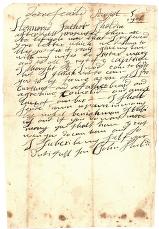
|
August 5, 1706
John Sheldon, Jr., wrote to his father to ask for some high-value gifts to help achieve the return of captives from the 1704 Raid on Deerfield, Massachusetts. |
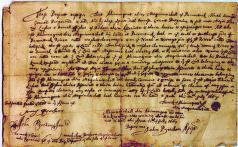
|
July 22, 1667
This deed assigns land belonging to Ahimunquat in present day Deerfield, Massachusetts, to members of the Dedham, Massachusetts, community. |

|
circa 1890
This circa 1890 photograph shows the baptism record of Abigail Nims. |
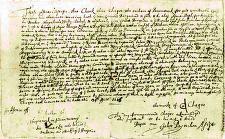
|
February 24, 1667
This deed, probably drawn up by John Pynchon of Springfield, Massachusetts, certifies that Chauk or Chaque, sachem of the Pocumtuck people, assigns land formerly held by his people to members of the town of Dedham, Massachusetts. |

|
1672
This commentary on the Bible was reportedly given to John Williams while he was in New France (Canada) in 1706. |
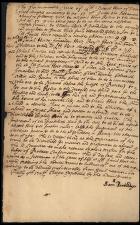
|
1706
This is a settlement of the estate of David Hoyt (1651-1704), who was carried off to New France (Canada) in the 1704 raid on Deerfield, Massachusetts. |
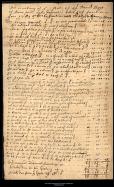
|
1704
The inventory of Lt. David Hoyt, resident of Deerfield, Massachusetts, was taken in order to clear his debts and to insure that his family received their just share of his estate. |
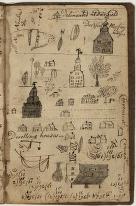
|
1728
"Delineated at Deerfield" was drawn by Dudley Woodbridge in 1728. It shows the town common, meeting house, and dwellings that lined the common. |

|
June 12, 1729
This typically lengthy sermon by the Reverend Isaac Chauncey repeatedly praised the Reverend John Williams's personal piety and sterling ministerial qualities despite personal tragedy and affliction.
|
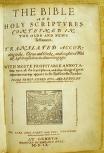
|
1560
The Geneva Bible, a complete English translation of the Bible printed in Geneva in 1560, remained popular well into the 17th century. |
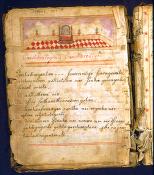
|
circa 1700
Attributed to Father Jacques Bruyas, a Jesuit missionary, this manuscript was probably used to teach Kanienkehaka or Mohawk converts in missionary settlements. |
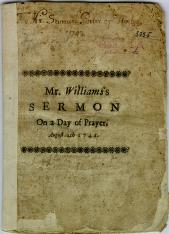
|
August 4, 1741
When Eunice Williams visited New England for the second time since she was taken captive in the 1704 raid on Deerfield, Massachusetts, her cousin Solomon Williams (1700-1776), preached on "The Power and Efficacy of the Prayers of the People of GOD." |
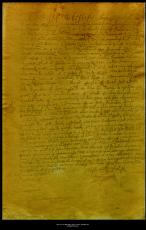
|
August 26, 1672
Drawn on the 26th day of August 1672, this deed assigns land on the south side of the Deerfield River to John Pynchon of Springfield, Massachusetts. |
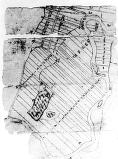
|
1680 - 1700
This partial map of the street and north meadows of Deerfield, Massachusetts, dates to the late 17th century. |
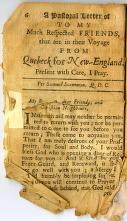
|
1706
In the hands of ministers like Cotton Mather, the spiritual and physical hardships of New Englanders captured by Indians became powerful testimonials of religious faith in the face of extreme adversity and persecution. |

|
October 2, 1749
The matter-of-fact tone of this runaway slave notice that appeared in a Boston newspaper in 1749 reveals that slavery was an accepted part of the culture and social structure of 18th century America. |
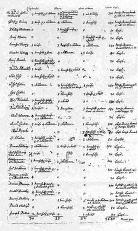
|
circa 1704
This document records the official losses to Deerfield, Massachusetts, following the 1704 raid on the town. |

|
1701
The importance of the Great Peace Treaty of 1701 is evident from the large number of signatures it bears. Nearly forty pictograms of signatory Native nations appear at the end of the document. |
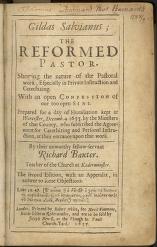
|
1657
This account of the life and conversion of the Puritan minister Richard Baxter belonged to Hannah Westcarr Beaman (1646-1739) of Deerfield, Massachusetts. |

|
1704
The Puritan minister Timothy Edwards (1669-1758) used these notes to deliver a sermon one week after the 1704 raid on Deerfield, Massachusetts. |

|
1703
This warning letter from Colonel Samuel Partridge to Governor John Winthrop predicts the attack on Deerfield, Massachusetts, six months before it occurred on February 29, 1704. |
![]()
![]()